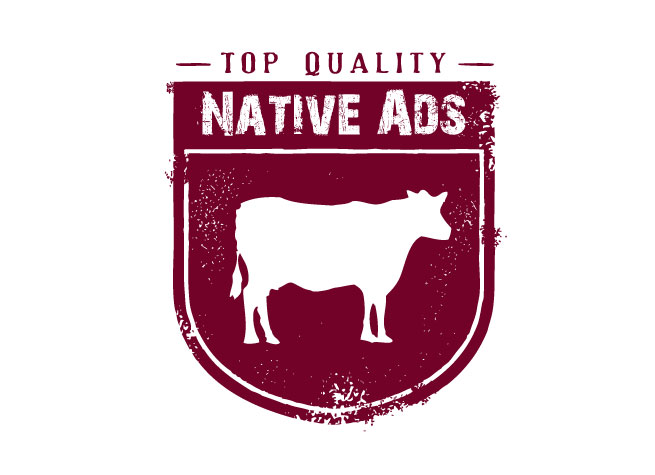2014 is poised to be a big year for “native advertising” as it goes from an industry buzzword, commonly used and inconsistently defined, to a meaningful share of revenue for most publishers. Or at least that’s what I asked Santa for a few weeks ago.
Basically, native ads are ads that are constructed to emulate the surrounding content. And they’re catching on because, rather than trying to distract users from the content they’re interested in (via flashy banners or ads that expand to take over the screen), native ads act as part of the content.
Convince me that marketers care only about scale
In a world where there is now infinite scale for digital ad inventory, I have a hard time believing what marketers are looking for is even more scale. They don’t need native for that, they already get it from display, video and mobile. For the same price you pay at your favorite restaurant for a great meal, you could load up on Big Macs for a week, but there is a marked difference in the end result. Similarly, what any marketer with a serious content marketing budget looks for is quality, and not the first opportunity selling simple volume.
Native presents an opportunity to reach a high quality audience combined with high quality engagement (spoiler alert: it’s not a click-through-rate). Content marketers are increasingly going directly to premium publishers (versus networks) to achieve this and are establishing direct relationships for content creation and distribution needs to maximize the quality of audience and associated engagement.
Native is the ‘organic’ for digital ads
The food industry has made so much money from the rise of “organic” thanks to consumer perception towards food that carries the label (and of course drinks…I was recently offered organic whiskey). Not to mention the premium we are all willing to pay for organic anything. If native is the “organic” premium product of digital advertising, then programmatic is the “no name” inexpensive product.
Native is the way for premium publishers to hedge against the downward price pressure that programmatic, exchanges and real-time-bidding have brought to their display inventory. For native inventory to stay organic (excuse the pun), it has to be kept out of the hands of networks, who will eventually turn it into inexpensive programmatic inventory long-term.
What would Don Draper do?
I’ve watched enough Mad Men (it’s okay to admit it) to recognize a pattern. The first question Don Draper asks a new client is what their goals are. Always. Try it sometime. Content marketers will tell you they now need help finding an audience that’s receptive to their message and actually interested in engaging with their brand. Especially in a world where consumers have developed banner blindness and readers avoid clicking on anything which resembles an ad like the plague.
How does native avoid the unfortunate path of other digital ad products that provide little value to both consumers and advertisers who pay next to nothing for an impression? Simple. Provide value to consumers with engaging content that’s relevant to them. Quality content alone is not enough. Where it is placed (think premium publishers versus networks) and what it is placed around it influences a readers’ perception of the quality of the sponsored content.
Doing anything for money
In high school I ran my students’ council and we would host a lunchtime event called “anything for money” (can you guess where I’m going with this?). We would fill an entire auditorium and encourage teenagers to do stupid things for $20. And you know what? It worked. I never understood why though. And here we go again.
When I see premium publishers make native ad inventory available to ad networks, it feels like they are ready to do anything for money. We are talking about putting a sponsored story within your content stream (with clear labeling of course). Why in the world as a publisher would you let a marketer purchase such prime real estate from anyone but your direct sales team? Publishers will best be able to drive high-margin revenue from the rise of content marketing and native advertising by offering the inventory directly to their clients (which may mean trading off short-term pennies for long-term dollars).
Quality matters; quality of content, quality of audience, quality of engagement – all of which are somewhat counter to scale (which has become the de facto solution to every problem). I don’t get how scale is going to make native worthwhile for publishers, marketers and consumers. But I do get how a focus on quality will help native make even more sense for the industry (and my Christmas wish come true in 2014).
Kunal Gupta is CEO of native ad platform maker Polar and is regarded as a rising young visionary, shaping the future of media. Kunal has been recognized as a Top 30 Under 30, a United Nations Global Citizen and Ernst & Young’s Entrepreneur of the Year. You can follow him on Twitter: @kunalfrompolar.
VentureBeat's mission is to be a digital town square for technical decision-makers to gain knowledge about transformative enterprise technology and transact. Learn More

